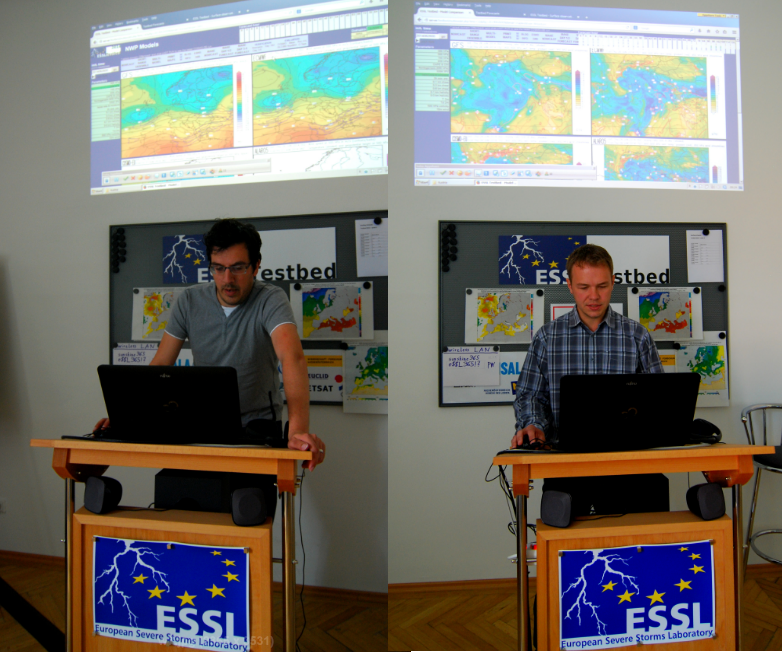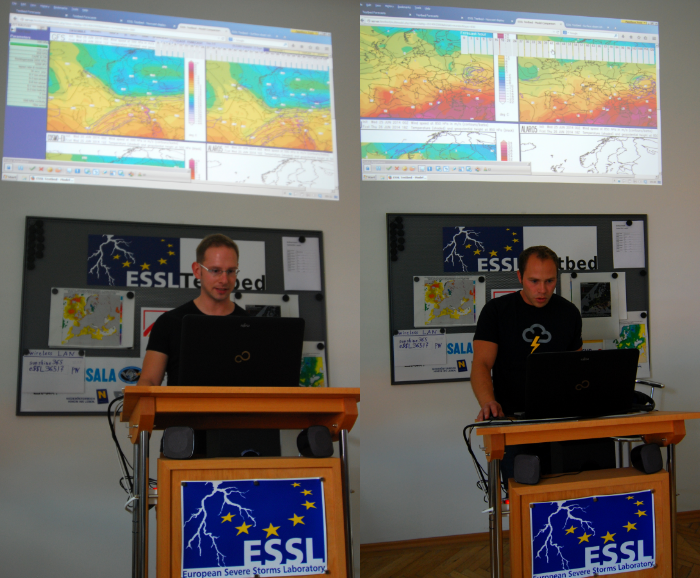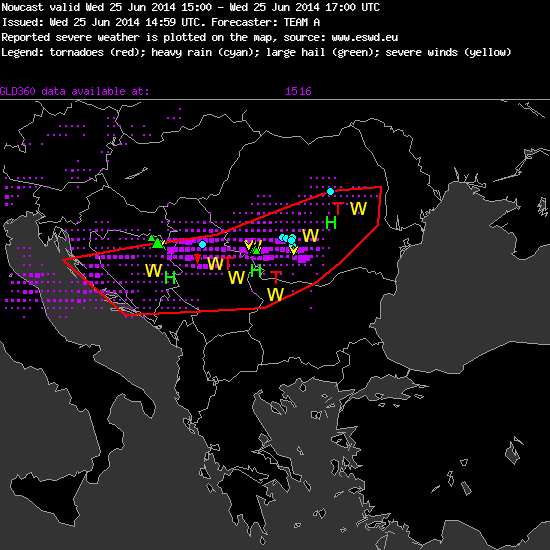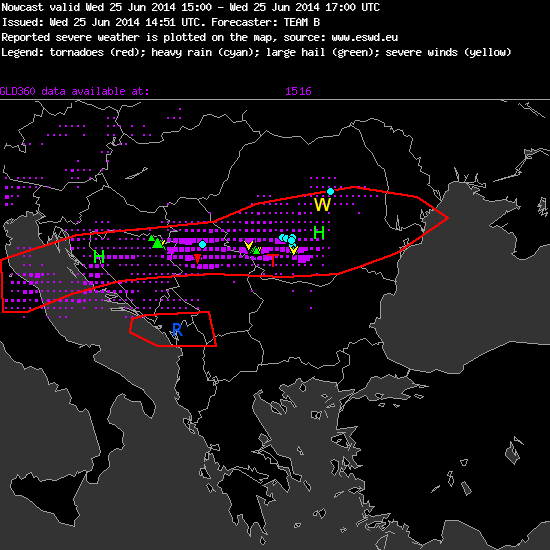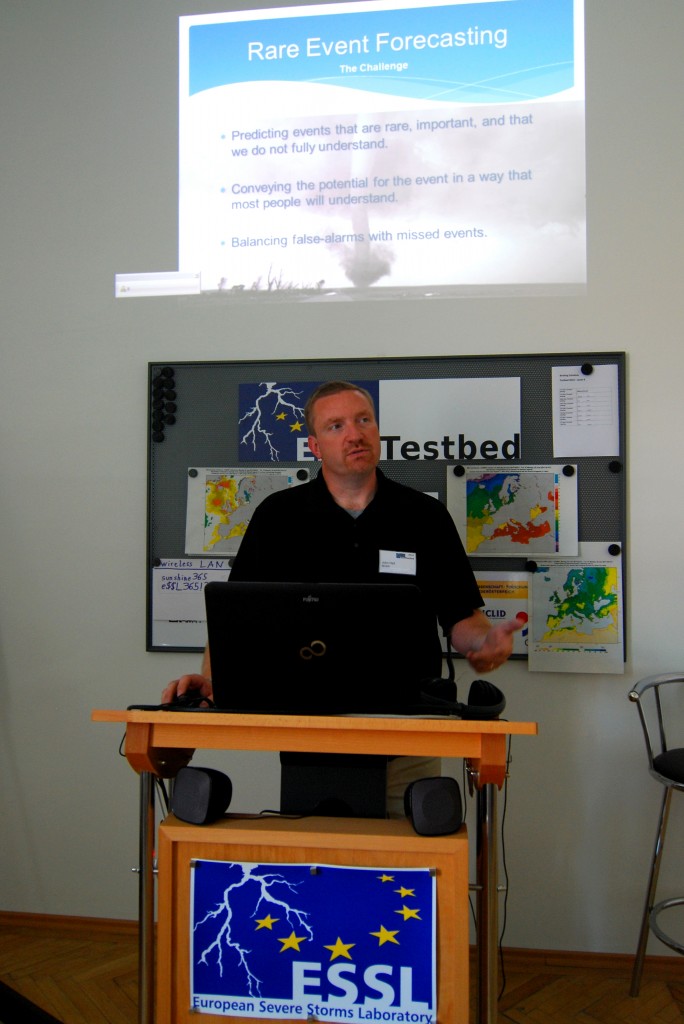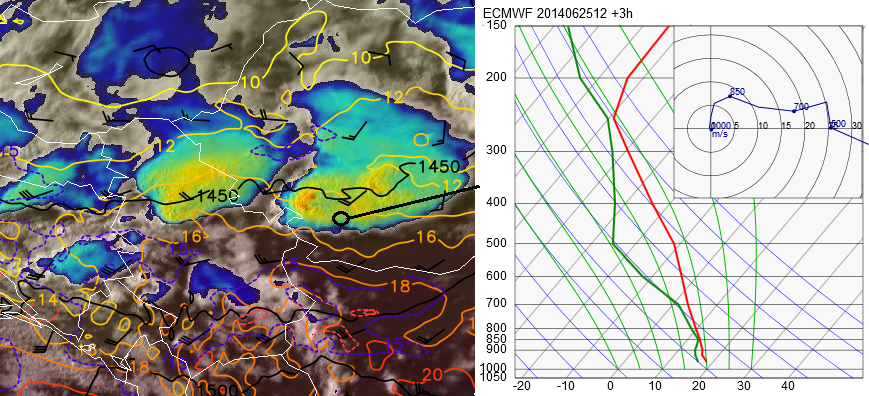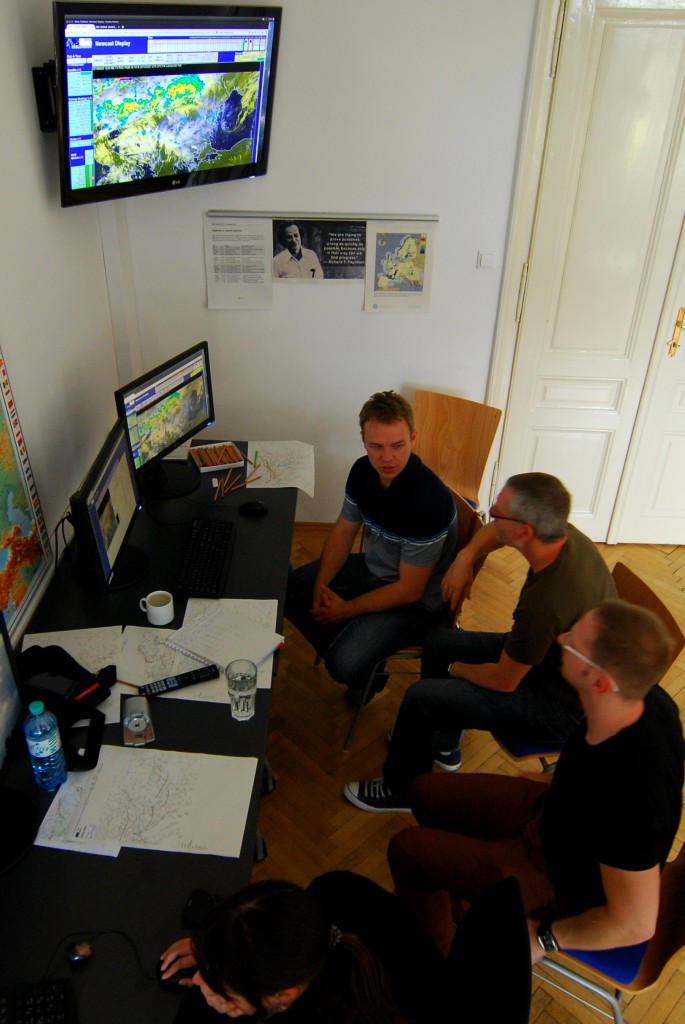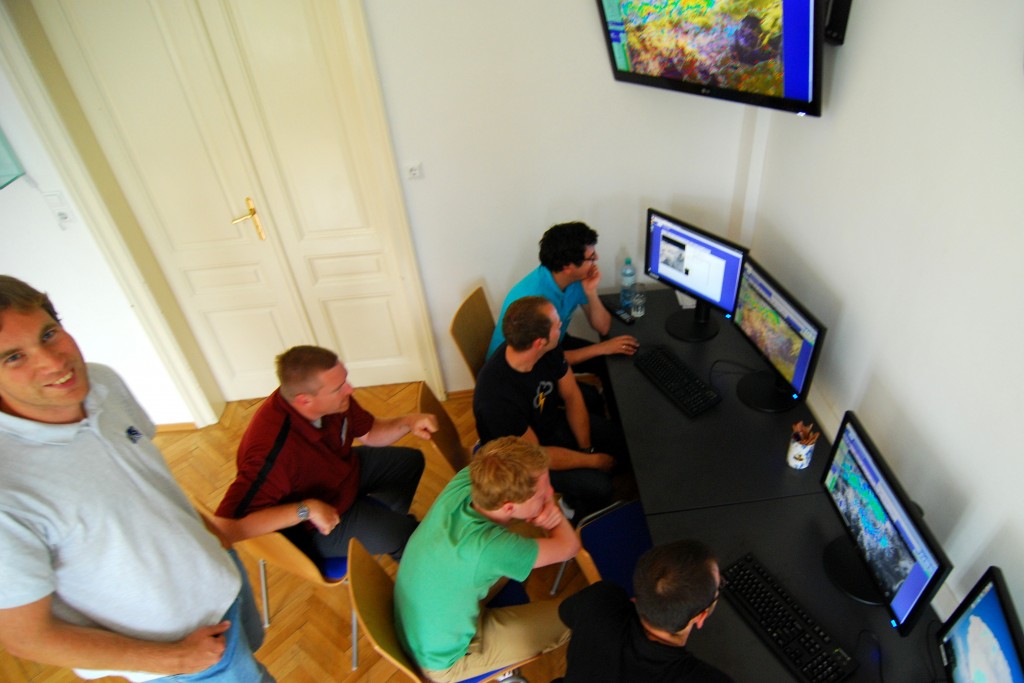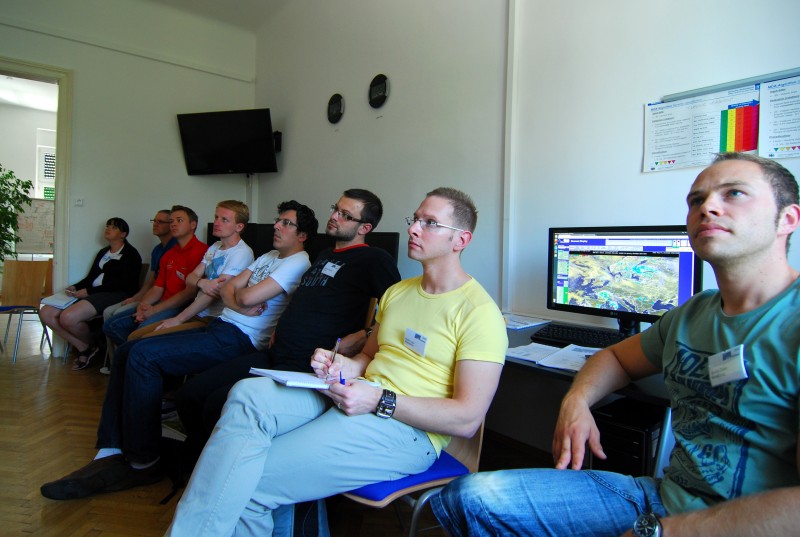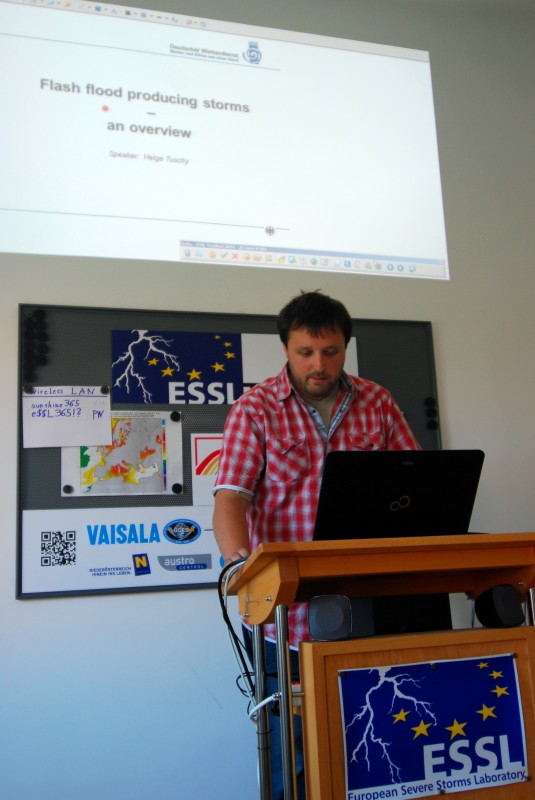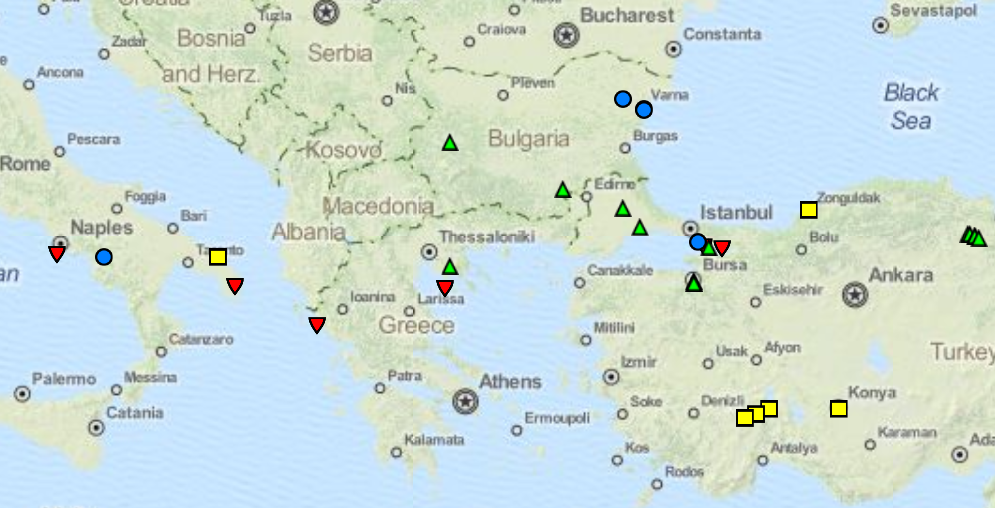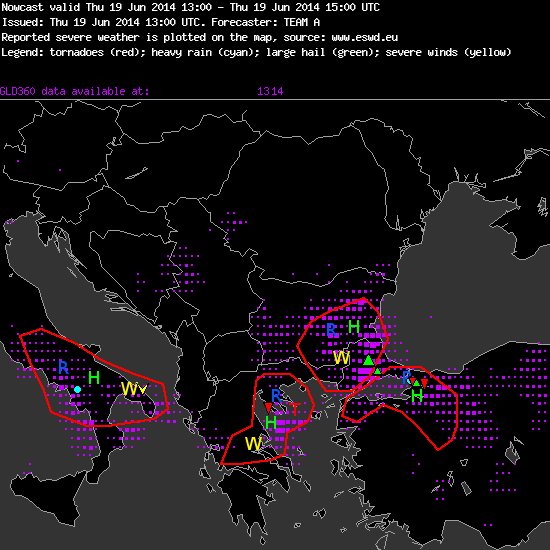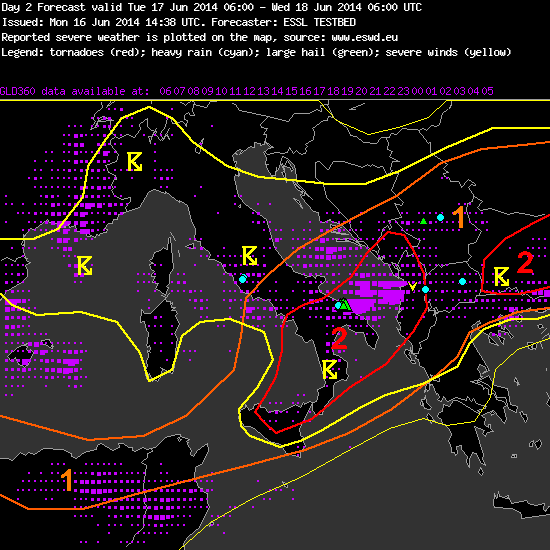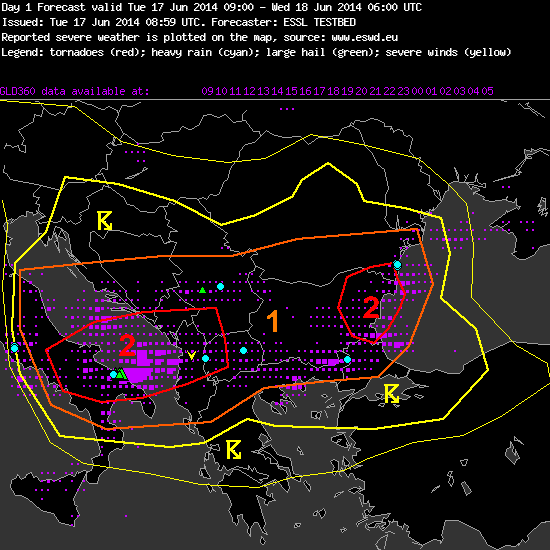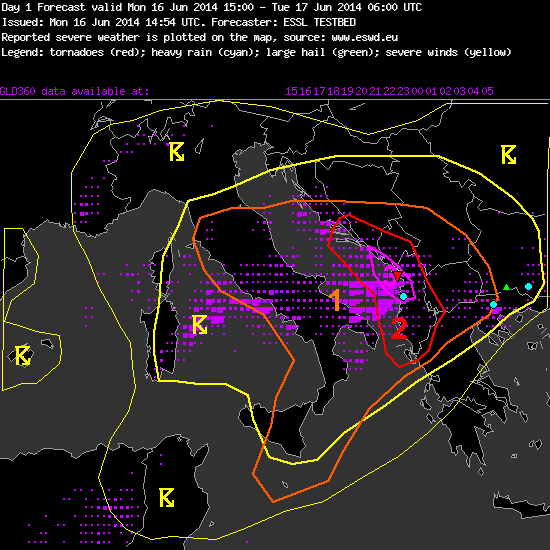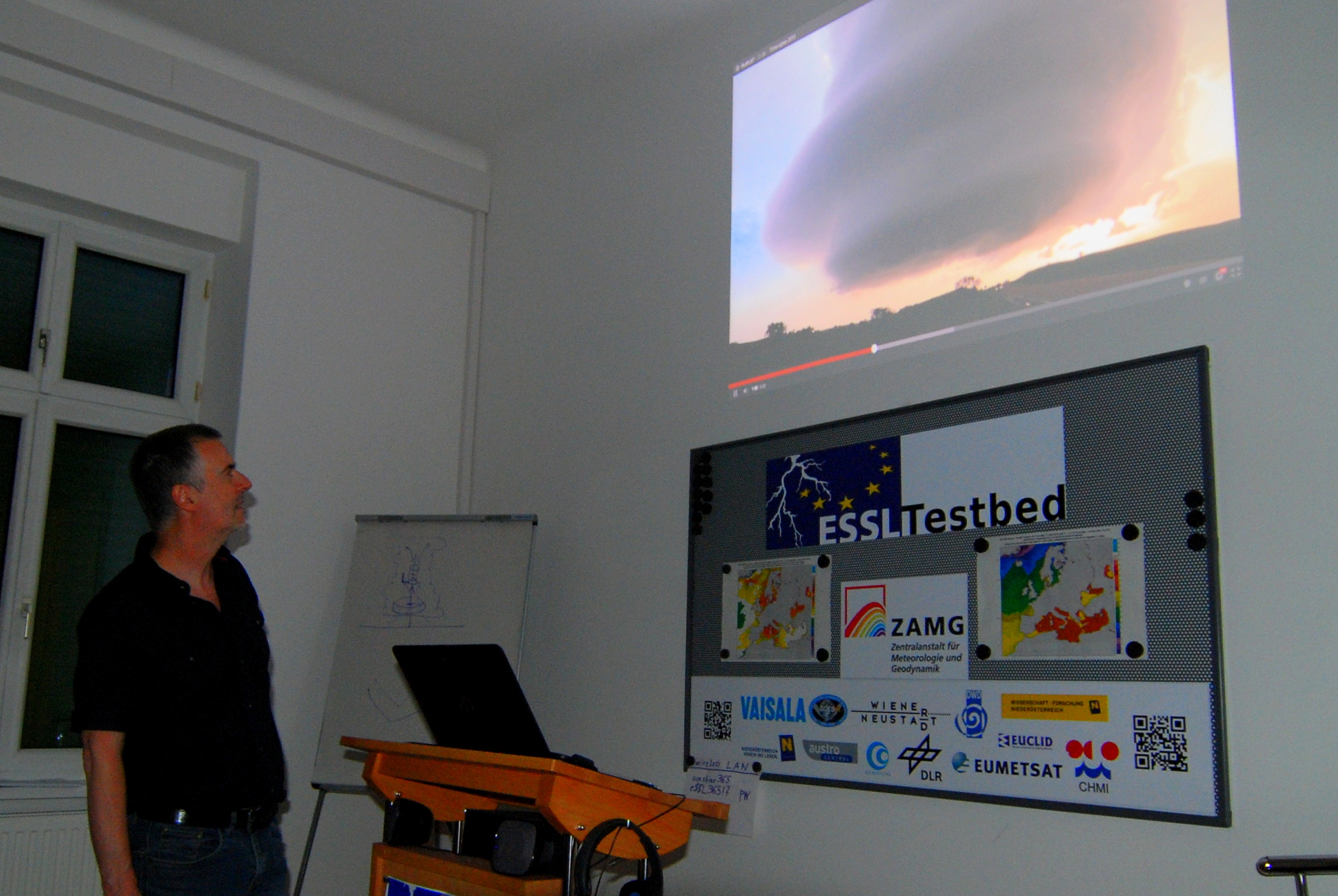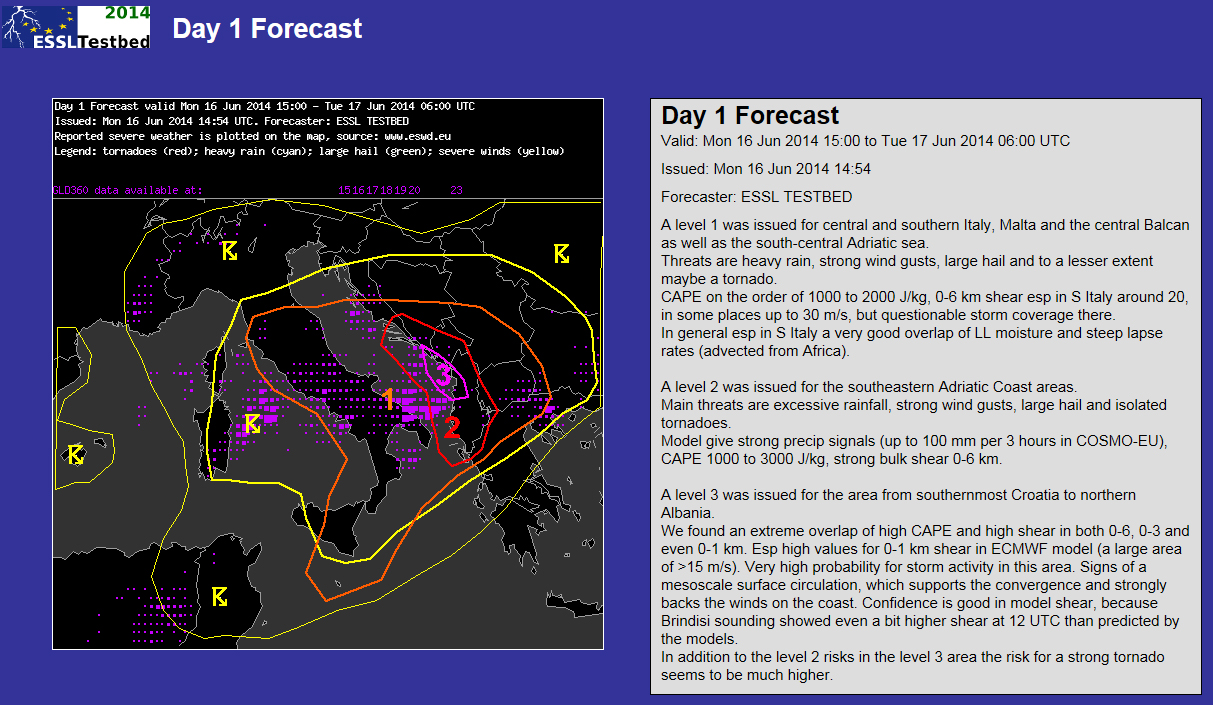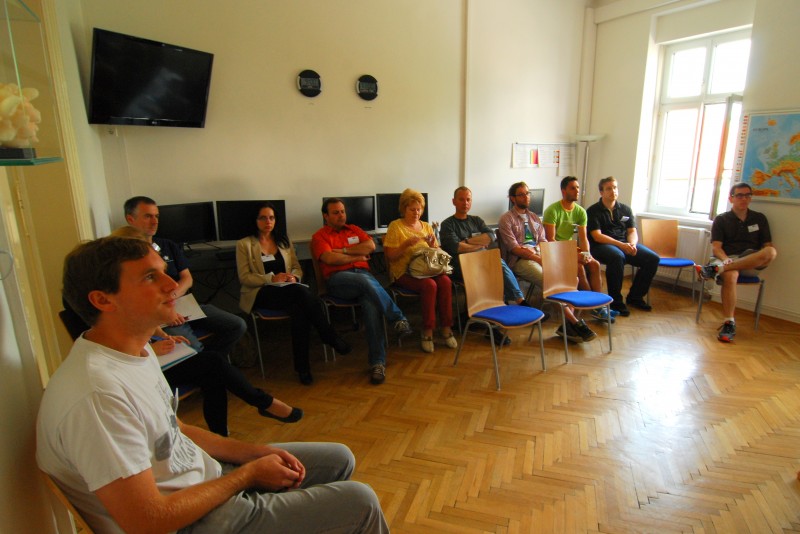In the morning, first verification of our week 4 participants revealed severe weather reports from N Italy and parts of Austria. Lightnings derived from GLD360 network overlapped quite well with >50% probability for lightning threat (thick yellow line). 
In the afternoon, our expert John Hart from SPC gave very interesting presentation on the topic “Overview: Severe Weather Forecasting”. Basing on his 25 years of experience in forecasting severe weather, it was a great opportunity to listen his talk. We had numerous questions from our participants and long discussion.
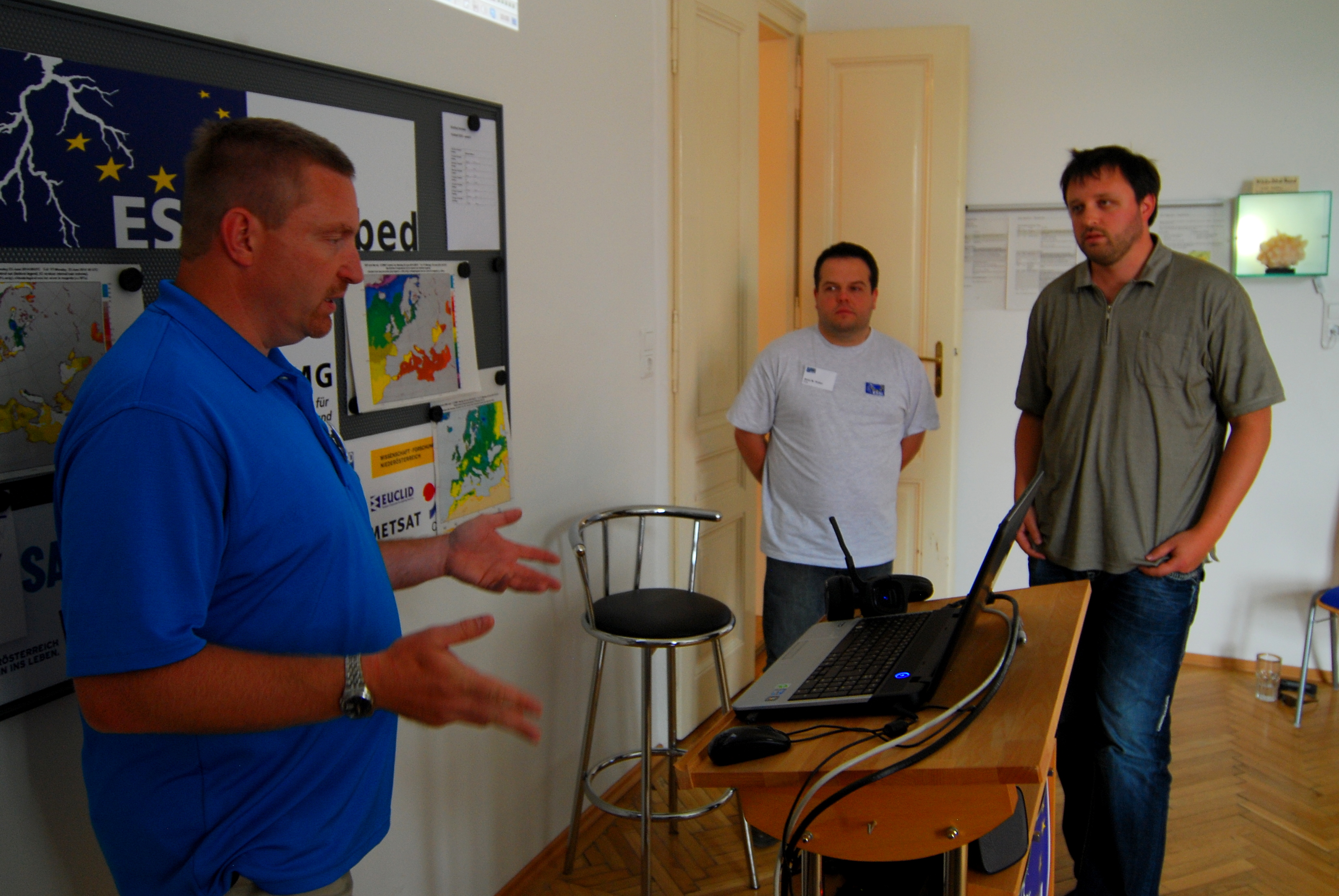
John Hart having discussion with Helge Tuschy and Alois Holzer
Later on, participants began to analyze weather setup for Wednesday and finded out that severe weather outbreak is possible tomorrow in central Italy and Balkan Penninsula. Mateusz Barczyk and Piotr Zurawski from Poland presented results of their teams day1 and day2 forecasts.

Piotr Zurawski presenting day2 forecast (left), and Mateusz Barczyk presenting day1 forecast (right).
… and this is how their forecast for tomorrow look like:

A level 1 and level 2 was issued for northern Italy and northern Balcans for heavy precipitations and to lesser extent for large hail and severe wind gusts.
A level 1 and level 2 was issued for central Italy and southern Balcans for large hail and severe wind gusts.
SYNOPSIS:
Strong SW flow at 500 hPa. Hot and dry air from Sahara is advected over the southern part of our domain. Frontal boundary stretches from western Mediterranean across northern Italy into northern Balkan states. Rich low-level moisture is present near this frontal boundary and enables mod CAPE (500 to 1500 J/kg) over a wide area. Deep-layer shear will be very strong (25 to 40 m/s) in the belt from Tunisia across much of Italy and the Balkans. Large scale lift is available ahead of a short wave trough which moves in from the west.
Widespread storms are expected to form in the noon and afternoon hours over level 2 area and to move eastward. Overnight the arriving trough can also initiate scattered storms over central Mediterrean region, where a strong capping inversion is still in place during daytime.
Storms can organize very well, including supercells and large clusters. Large hail and severe wind gusts are the dominant risk over the southern half of level 1 and 2 area, where more discrete stroms are expected. Due to high low level shear (up to 15 m/s) also a few tornados may occur, especially in the Balkans area.
The highest coverage of storm is predicted further North, where heavy precipitation is the primary risk.
_______________________
Our readers: any comments? 🙂

